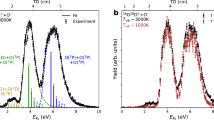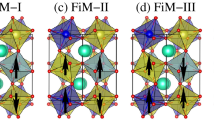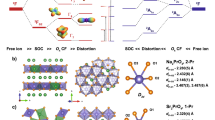Abstract
THE essence of my suggestion was that there is a charge transfer from the hæmoglobin to the oxygen molecule, that is, some delocalization of one of the d-electrons of the ferrous towards the oxygen. This was meant as a starting approximation, the details to be settled by some physical measurements concerning the electronic structure. There are no obvious grounds why the resulting structure could not be diamagnetic. If this would not agree with a certain conventional definition of oxidation number then this would only show that this definition is no longer useful in this case. This is perhaps not surprising, because the O−2 ion has itself an unpaired spin unlike the common anions such as OH−, CN−, which are all diamagnetic. This does, therefore, involve the more complicated problem of the interaction of the two magnetic ions when they come close together.
This is a preview of subscription content, access via your institution
Access options
Subscribe to this journal
Receive 51 print issues and online access
$199.00 per year
only $3.90 per issue
Buy this article
- Purchase on SpringerLink
- Instant access to full article PDF
Prices may be subject to local taxes which are calculated during checkout
Similar content being viewed by others
References
Weiss, J. J., Nature, 202, 83 (1964).
Author information
Authors and Affiliations
Rights and permissions
About this article
Cite this article
WEISS, J. Nature of the Iron–Oxygen Bond in Oxyhæmoglobin. Nature 203, 183 (1964). https://doi.org/10.1038/203183a0
Issue date:
DOI: https://doi.org/10.1038/203183a0
This article is cited by
-
Quantum chemical DFT study of the interaction between molecular oxygen and FeN4 complexes, and effect of the macrocyclic ligand
Journal of Molecular Modeling (2014)
-
The McClure and Weiss models of Fe–O2 bonding for oxyhemes, and the HbO2 + NO reaction
JBIC Journal of Biological Inorganic Chemistry (2014)
-
Lessons on O2 and NO bonding to heme from ab initio multireference/multiconfiguration and DFT calculations
JBIC Journal of Biological Inorganic Chemistry (2011)
-
Cathodic reduction of oxygen at new iron complexes
Journal of Applied Electrochemistry (1991)
-
End-on versus side-on coordination of dioxygen model ab initio calculations for the adducts of Co(acacen)
Theoretica Chimica Acta (1975)



